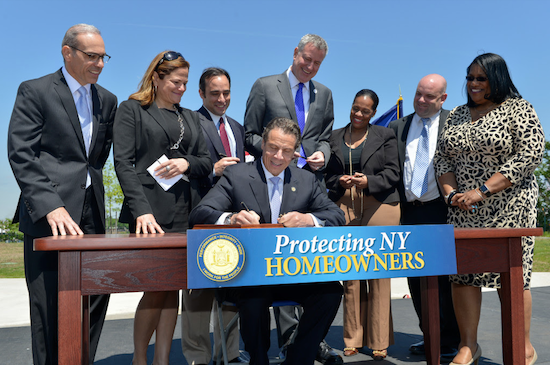Tax relief coming for homeowners with properties damaged by superstorm Sandy

Appearing at a newly reopened three acre waterfront park located along the Kill Van Kull on the North Shore of Staten Island Staten Island, Governor Andrew M. Cuomo signed legislation today that will provide relief to New York City residents subject to higher property taxes as a result of repairs to homes severely damaged by Superstorm Sandy. The legislation was unveiled and championed by both the Governor and Mayor de Blasio, who also appeared at the signing.
“In the aftermath of Superstorm Sandy, homeowners across the downstate region were forced to invest in significant repairs to make their homes more resilient – investments that would increase their taxes under normal circumstances,” the Governor said. “Sandy was not a normal circumstance, however, and I will not allow taxes to be raised on property owners simply because they are repairing the damage that was done and planning wisely for the future.”
As the assessed value of a property may have increased after repairs or reconstruction undertaken in the wake of Superstorm Sandy, some homeowners whose homes were damaged during the storm are now subject to higher property tax bills — even if the homeowner only restored the building to its condition prior to the storm.

Brooklyn Boro
View MoreNew York City’s most populous borough, Brooklyn, is home to nearly 2.6 million residents. If Brooklyn were an independent city it would be the fourth largest city in the United States. While Brooklyn has become the epitome of ‘cool and hip’ in recent years, for those that were born here, raised families here and improved communities over the years, Brooklyn has never been ‘uncool’.